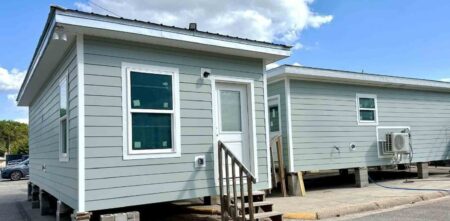FLORIDA — People do many things to newly planted trees, such as improper pruning and fertilization, that interfere with tree growth and defenses.
Trees strive to balance the above-ground portion (crown) and the below-ground portion (roots). The crown (leaves, buds, and supporting branches) produces energy. The roots take in essential elements and water. One part cannot live without the other.
Eighty percent or greater of a tree’s root system can be left in the ground with a field-grown tree or when transplanting a tree. This is just the nature of the beast, so to speak.
Sometimes, people think they are helping a newly planted or transplanted tree by removing some of the tree’s branches to compensate for lost roots. This practice damages the tree even more than the initial root loss.
Within woody plants, the signals that additional roots are needed come from hormones found in the buds within the canopy. When living branches are indiscriminately removed, live buds that produce these root-signaling hormones are removed, reducing the likelihood of new root growth.
Also, valuable nutrients stored in the wood of limbs and branches are removed by pruning out living branches and limbs.
It is best to let the tree adjust to root loss independently. In doing this, the tree will eventually begin to naturally lose limbs, adjusting to root loss on its own. As this happens, nutrients will be moved to other parts of the tree before the limb is walled off.
If you haphazardly remove living branches, these nutrients are removed with the limb, further weakening the tree. As the tree adjusts to being moved, branches will naturally die over the next several years.
When this happens, then prune out the dead limbs. This is the best practice.
One old practice was to apply large amounts of nitrogen fertilizer to help a tree regrow following being planted or transplanted. However, this can cause problems, as well. Nitrogen is likely to “force” new top growth (shoots and leaves) before the tree has had a chance to produce adequate roots, resulting in the tree becoming more out of balance.
It is best to allow time for the tree to produce roots first and then fertilize based on the results of a reliable soil test.
Give trees a little time to naturally adjust to being moved (planted/transplanted). The time to adjust varies from a year to several years. People-adjusted trees are usually doomed to failure and a shorter life.
More information on planting and establishing trees is available through the UF/IFAS Extension Office in your county or from this website: https://hort.ifas.ufl.edu/woody/planting.shtml.
Larry Williams is the Extension Horticulture Agent with the Okaloosa County Cooperative Extension Service, University of Florida. Contact Larry at 689-5850 or email lwilliams@myokaloosa.com.







